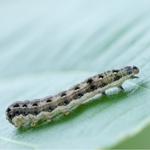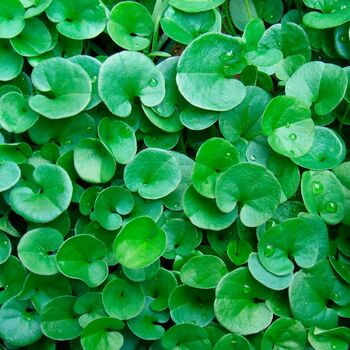
How to Grow Dichondra Seeds
Grow Guide #2864
Family: Convolvulaceae
Binomial name: Dichondra repens
Life Cycle: Perennial
This 'How to Grow' guide details everything a home gardener needs to know to plant, grow and care for Dichondra (Dichondra repens).
When to Sow Dichondra Seeds
Dichondra is a perennial plant that grows year round in most climates. Use the table below to identify the best time of year to sow dichondra seeds in your climate.
| JAN | FEB | MAR | APR | MAY | JUN | JUL | AUG | SEP | OCT | NOV | DEC | |
|---|---|---|---|---|---|---|---|---|---|---|---|---|
| Cool | ||||||||||||
| Temperate | ||||||||||||
| Sub-Tropical | ||||||||||||
| Tropical | ||||||||||||
| Arid |
Preparation
Dichondra plants are best grown in part shade. Choose a location that will receive between 3 and 6 hours of full sun each day. Avoid planting in positions that receive full sun in the afternoon.
Dichondra plants are perennial, meaning they live for several years. Choose a permanent position where plants can grow undisturbed by regular digging.
Once established, dichondra plants spread quickly by underground stolons. Dichondra plants can be difficult to eradicate once they are established in the garden. Choose a permanent position in a lawn or garden bed, use a garden edging or other barrier or grow them in containers to prevent them spreading into unwanted areas.
Dichondra plants need a well drained soil enriched with organic matter. Prepare soil by weeding it thoroughly and digging it over to loosen it. When sowing dichondra as a lawn substitute, rake over the area to make a level seed bed and water it to make sure the soil is not hydrophobic. If growing in sandy soil, add compost or a 5cm layer of good quality topsoil to the site before planting.
Keep the area free of weeds until planting; this is especially important for dichondra lawns as plants are not able to compete with grasses and it is difficult to weed areas once seedlings have emerged.
Dichondra plants can be grown in containers. If possible choose a variety that’s recommended for container growing. Use a good quality potting mix and make sure your container is large enough for mature plants; a minimum of 10 litres is recommended for dichondra. During the growing season, keep in mind that container grown plants may need additional fertiliser to encourage healthy growth.
How to Sow Dichondra Seeds
Dichondra seeds do not require any treatment (eg soaking, stratification) before sowing.
Dichondra seeds can be sown directly into the garden or lawn area OR seedlings can be raised in trays or other containers and transplanted to the garden once established.
Sow Direct as a Lawn Substitute
- For lawn areas, scatter seeds at a rate of 10g per square metre.
- Rake the area lightly to cover the seed. Lightly press the seed into the surface of the soil using a lawn roller, flat piece of wood or similar.
- Water lightly to keep soil moist but never wet or dry; it may be necessary to water several times a day to keep the seedbed moist.
- Seeds should germinate in around 7-14 days at a soil temperature of 18-24°C.
- Once seeds emerge, water every second day, gradually reducing the frequency to twice a week during the first growing season.
Sow Direct in Garden Beds
- Sow seeds directly in the garden 5mm deep and 20cm apart.
- Keep soil moist but never wet or dry.
- Seeds should germinate in around 7-14 days at a soil temperature of 18-24°C.
- Young seedlings will need protection from pests, pets and weaterh until they are established.
Raise Seedlings
- Fill trays, punnets or jiffy pots with a good quality seed-raising mix, or use soil starter pellets.
- Sow seeds 5mm deep.
- Keep soil moist but never wet or dry.
- Seeds should germinate in around 7-14 days at a soil temperature of 18-24°C.
- Transplant seedlings to the garden once they have their first true leaves and are large enough to handle (usually 5-10cm tall).
- Plant out, spacing plants 5-20cm apart.
How to Grow Dichondra
Dichondra plants may need watering during the growing season. Water when the soil is dry about 5cm below the surface (test this by scratching away a little soil with your finger). Water deeply in the early morning or late afternoon. Avoid watering the leaves of plants to avoid fungal diseases. Learn more about watering here.
If soil was well prepared no extra fertiliser should be necessary. In poor soil or to give your plants an extra boost, application of a balanced fertiliser or one formulated for fruit and vegetables can be beneficial:
- Apply slow release fertiliser at the recommended rate when transplanting or when seedlings are 5-10cm tall.
- Apply liquid fertiliser at the recommended rate and frequency while plants are fruiting or flowering.
Dichondra should reach maturity in approximately 120 days.
Dichondra is usually left to grow to its mature size. If a uniform height is desired, plants can be mown occasionally, taking care not to remove too much foliage.
Common Problems when Growing Dichondra
Like all plants, dichondra is susceptible to some pests, diseases and other problems. Below is a list of the most common problems gardeners encounter when growing dichondra plants:
 Cutworms are moth larvae that live in the soil, emerging at night to feed. The caterpillars are 3-4cm long and white, grey or brown in colour. They can chew through the stems of tender seedlings, felling them at ground level. Remove cutworms by hand at night or use cardboard collars to protect the stems of seedlings.
Cutworms are moth larvae that live in the soil, emerging at night to feed. The caterpillars are 3-4cm long and white, grey or brown in colour. They can chew through the stems of tender seedlings, felling them at ground level. Remove cutworms by hand at night or use cardboard collars to protect the stems of seedlings.


.png)



